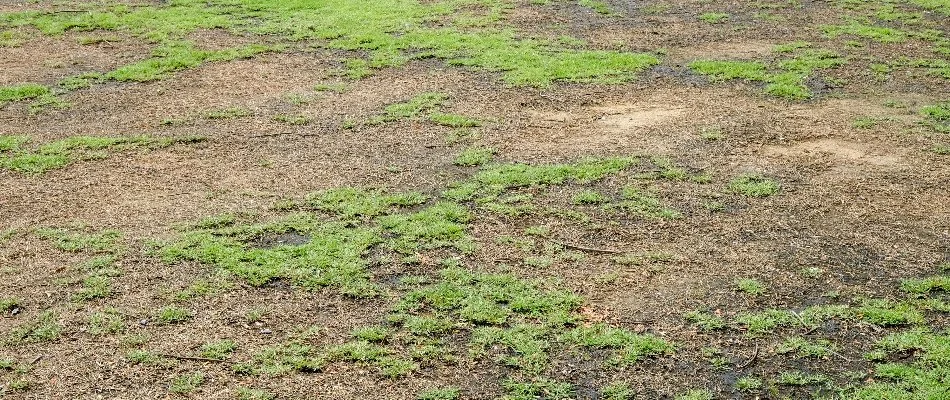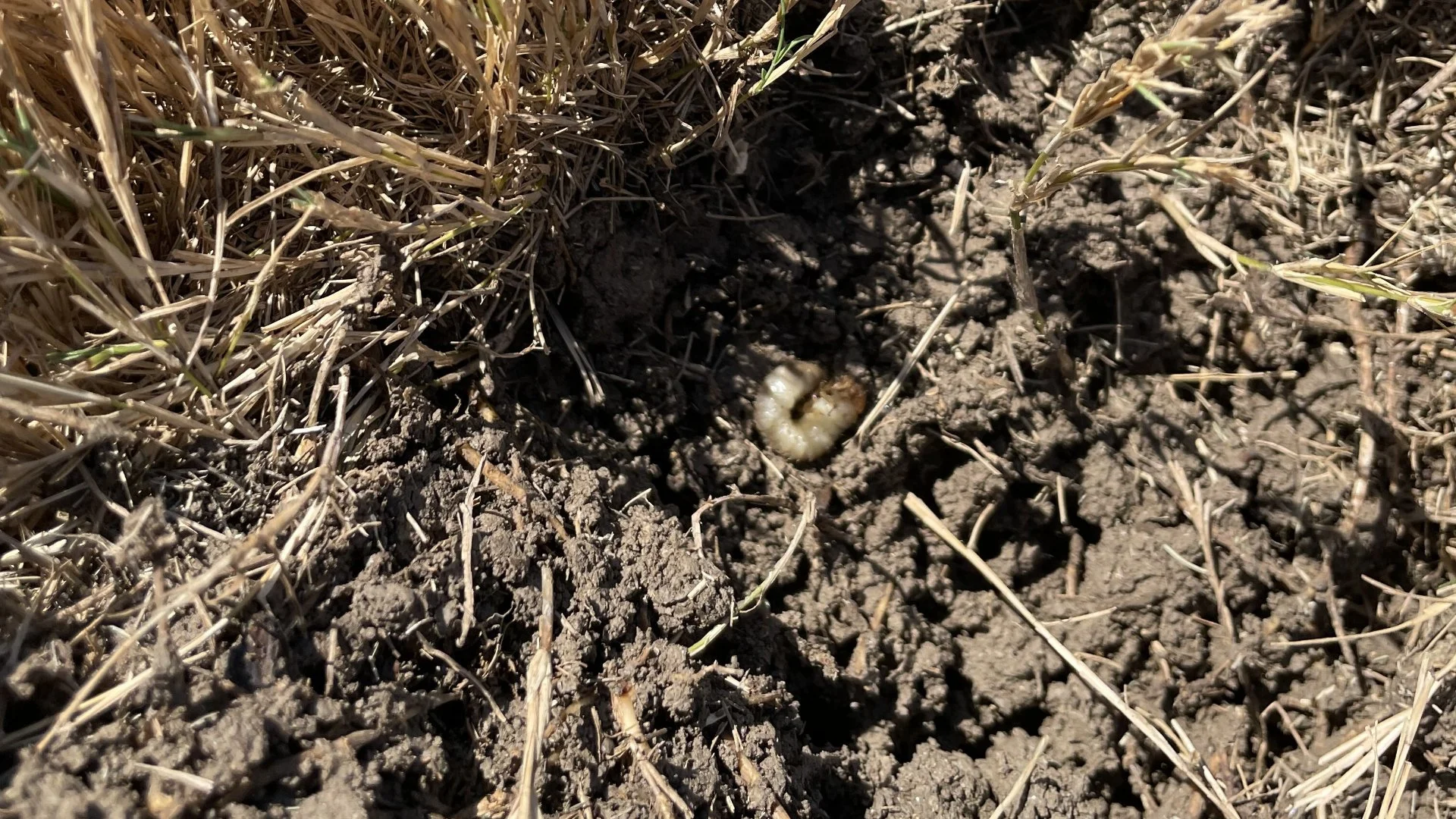Grubs are a common lawn problem here in Texas, and they are something that homeowners should definitely be worried about. These small, C-shaped larvae can cause significant damage, as they feed on the roots of your grass, leading to brown patches and weakened turf. This not only affects the health of your lawn but also drags down your property's curb appeal. To prevent a grub infestation, it's best to invest in preventative treatments. However, if grubs have already infested your lawn, curative treatments should be scheduled right away to minimize the damage they can cause.
Grubs can wreak havoc on your lawn's health.

Grubs are notorious for their destructive feeding habits. These small, C-shaped larvae are the immature stage of beetles. They reside beneath the soil surface and feed on the roots of your grass. As they feast on the roots, they sever the vital connection between the grass blades and the soil, causing it to turn brown and die.
One of the primary indicators of a grub infestation is the presence of brown patches on your lawn. As the grubs continue to feed, these patches will expand, leaving your lawn looking patchy and unhealthy. In severe cases, you may even be able to lift the affected turf like a carpet, as the roots have been completely severed.
A grub-damaged lawn will drag down your curb appeal.
In addition to the negative impact on health, a grub-damaged lawn can significantly drag down your property's curb appeal. A lush, green lawn is a desirable feature for any homeowner, and when it becomes riddled with brown patches and dead grass, it can detract from its overall aesthetic. Not only does a grub-damaged lawn look unsightly, but it can also affect the value of your property. Potential buyers may be deterred by the appearance of a damaged lawn, as it suggests a lack of proper maintenance and care.
What should you do to protect your lawn from grubs?
To protect your lawn from the damaging effects of grubs, it is crucial to take proactive measures. The best course of action is to invest in a preventative grub control treatment. Preventative treatments are designed to target grubs before they have a chance to cause significant damage to your lawn. They are typically applied in late spring or early summer when grubs are in their early stages of development. By applying a preventative treatment, you can effectively eliminate grubs before they feed on the roots of your grass.
However, if grubs have already infested your lawn, it is important to act quickly and schedule curative treatments right away. Curative treatments are designed to target and eliminate existing grub populations. These treatments are typically applied in the late summer or early fall when grubs are actively feeding. By scheduling curative treatments promptly, you can minimize the damage caused by grubs and prevent further deterioration of your lawn.
Give us a call today to schedule our grub control service.
At Weedex Lawn Care, we offer a grub control service to help protect your lawn from these root-feeding pests. Preventative treatments are available to safeguard your turf from grubs before they become an issue, which are applied in late spring or early summer to ensure we get ahead of them. However, if you're dealing with an existing infestation, you can enlist our curative applications to stop it in its tracks!
Our grub control service is available to residential property owners in Dallas, Fort Worth, Arlington, TX, and surrounding areas. Give us a call today at (972) 727-9207 to schedule, and say goodbye to these lawn-damaging pests!



Comments (0)
Thanks for your comment!
Thanks for your feedback! Your comments have been successfully submitted! Please note, all comments require admin approval prior to display.
Error submitting comment!
There is a problem with your comment, please see below and try again.